After a couple of months of solid oil painting, I moved back to watercolours, to ‘Cleanse The Palate’, or should I say Palette?!?
Painting with oils is a very different technical practice to watercolour painting. It’s a longer process, which allows for reflection and consideration. It takes time for the paint to dry which can be both a virtue and a royal pain in the arse. On the one hand, you can use this to manipulate the paint, but it’s easy to overwork and can result in losing the vibrancy and depth of colour.
Watercolour, on the other hand, you still adopt a technique to layer up the paint, but it’s a much more delicate process, and less forgiving, for while you can rework areas – overworking can result in effecting the integrity of the paper, and ultimately loose those lovely fresh qualities the this medium has to offer.
Layering up the paint with washes
It’s much easier to adjust and change a lighter watercolour wash that it is bold dark brush strokes. So I start by analysing the subject to be painted, to consider where the light and shadows are. Once I have established where the highlights are, this is my starting point for applying the paint. I apply a lighter wash of colour allowing this to dry completely before then looking for the medium hues and then the shadows in the image.
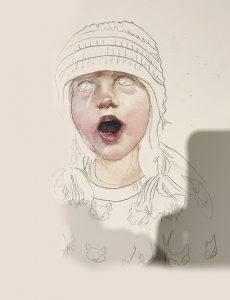
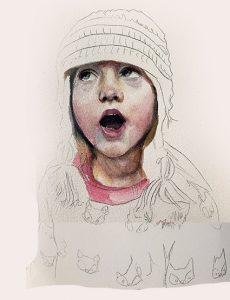
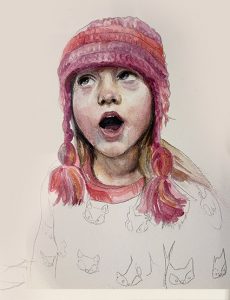
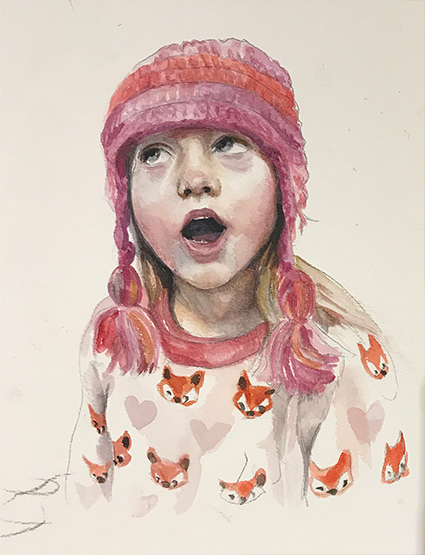
Embracing the ‘water’ in watercolour
Watercolour, gouaches, acrylics and oils paints are all such different mediums and needed to be treated so when used. Watercolour is exactly that, so I will work with washes of colour rather than mixing bold thick paint from the outset. The translucency of the medium means that I consider unconventional colours such as blues, greens and yellows, to create tones. When layered up, they compliment the skin tones and help to bring form to the painting.
Techniques for removing the stain
The benefits of using washes to gradually build up the depth and form in the painting means that if you have made a mistake, it’s easier to remedy. My top tools when using watercolour are paints, brushes, water and and essentially, kitchen paper. The later helps to not only remove excess washes, it is also the ‘go-to’ to help to remove unwanted paint. I will wash the area with clean water, lightly rubbing with the brush, then dabbing the excess water away carefully.This will allow you to remove the paint stain and make corrections.
The Devil is in the detail
I will alway use a selection of brush sizes, and when focusing on the eyes, nose and mouth I will use a finer brush to get the detail. I will also use a thicker paint here as well. I will usually work on these details later on in the painting once I am happy that the layering of the watercolour washes have created a suitable form.
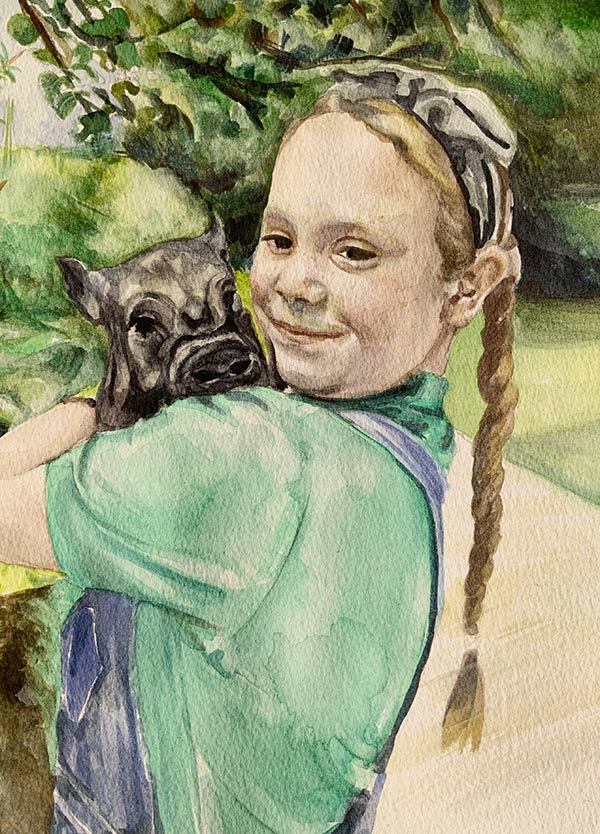
Get in touch
Enquire about a commissioned portrait, a custom painting or ask about one of the paintings in the ‘To Buy’ section of the website.
07779 271219 | info@maddiepaints.co.uk


